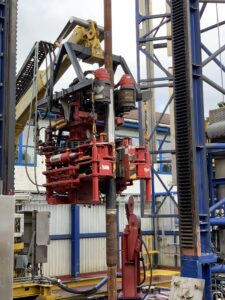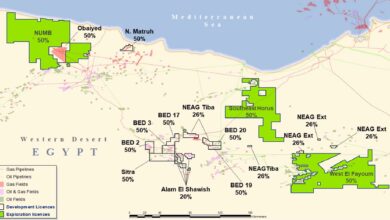Electrically powered, open-platform wired drill pipe technology headed for commercial launch this year
Field tests show system can deliver stable downhole power while communicating at rate of 56 kB/sec during drilling
By Ian Silvester, Reelwell

Over the years, the drilling sector has experienced generational and innovative technologies. These include M/LWD tools, PDC bits, rotary steerable systems, high-specification drilling rigs and automation. Enabling next-generation drilling technologies by using a powered and wired enabled drill pipe string is arguably the next step-change in drilling performance.
However, the market perception surrounding the wired drill pipe has historically centered around reliability and cost issues, alongside the positive benefits the technology can produce. With this in mind, extensive field tests have been carried out on Reelwell’s DualLink technology in Norway and the US.
The technology, which is expected to be commercialized this year, leverages high-speed bi-directional digital telemetry and power.
Bi-directional telemetry

In many ways, optimal performance is often held back in the way that oil and gas wells are currently drilled. Low telemetry data rates result in poor visibility downhole, which is akin to drilling “in the dark.” The situation is further challenged with measurements being taken far from the bit on ever longer BHAs.
Deployment of an electrically powered and wired drill pipe system has the potential for users to power downhole tools from surface and reduce, or remove completely, the need for downhole batteries and turbines. High-speed bi-directional telemetry along the wired drill pipe can improve real-time communications and downhole measurement quality, while enabling high-frequency surface and downhole data sharing and integration for automation.
Design of this new wired drill pipe system consists of:
- A braided conductor with more than 800 wires, combined with an insulating material manufactured on the internal diameter of each pipe;
- A field-replaceable pipe connector system that is self-cleaning; and
- Transceivers that are optimized for the transmission characteristics of the system and do not require repeaters.
The technology delivers logging and drilling telemetry of 56 kB/sec to supply high-resolution real-time data and imagery. The bi-directional communication path is an enabler for drilling automation applications.
Further, the technology can supply 500W of power from surface to downhole, with the potential to increase up to 3,000W. This offers redundancy to existing technologies that currently use turbines, or lithium batteries, for power downhole.
The system integrates into existing drilling rig systems and can be handled in the same way as regular drill pipe. The technology operates on an open platform.
Qualification process
The qualification process for the technology followed the DNV recommended practice A203 “Technology Qualification.” A total of 22 qualification and risk assessment activities were performed to simulate expected loads and failure mechanisms.
These activities included tension; torque; dogleg rotation; differential and absolute pressure cycles; temperature cycles; and combined pressure and temperature, for both mechanical and electrical components and the transceivers. Where possible, the product was tested until failure to determine actual performance.
Several iterations of load testing and design or material changes of the braid, as well as the bonding materials and manufacturing process, proved the technology to achieve greater than 15°/100 ft dogleg and tension to 80% of yield.
Drilling rig tests
Field testing was conducted over several years to test failure mechanisms, such as dynamic loads during make and break; damage during rig floor handling; establishing the effects of storage and handling in a dirty environment, as well as shock and vibration. These field tests have proven the ability of the system to bi-directionally communicate at high telemetry rates and to send power to downhole tools.
The system trials on rig operations have shown that stable downhole power can be delivered while communicating with a minimum bit rate of 56 kB/sec during drilling. A top drive slip-ring assembly at surface and a crossover to a service company BHA downhole were developed and used for the drilling trials. Drilling rig system tests included:
- November 2017, Norway – telemetry at 130 kB/sec, power at 24v/5A (120W) to transceiver over 39 joints;
- February 2018, US – telemetry at 66 kB/sec, power at 24v/5A (120W) to major service company tool over 11 joints while drilling cement inside of casing; and
- September 2019, Norway – connectivity uptime proven while under high shock and vibration loads.
Data logging downhole test tools were also deployed on subsequent rig tests. Transmitter and receiver data logger pairs were inserted into a regular drill string, separated by stands of powered and wired drill pipe. The data loggers are designed to test continued “uptime” connectivity while drilling. The technology demonstrated 100% uptime over 9.5 hrs circulating with 3,200 data transmission instances successfully received.
In addition to dedicated test rig runs to prove the system, pairs of joints were deployed to several operating drilling rigs in Norway and on US land. The aim was to prove rig-site handling and mechanical robustness of the drill pipe hardware.
Without dedicated personnel present, pairs of pipes were handled by rig crews and run as a part of regular drill strings on drilling and P&A jobs. In total, 294,280 ft of hole have been drilled over 88 runs, 2,248 hrs cumulative across six rigs in Norway and on US land. The results of the qualification and field reliability testing performed have given the organization the confidence to move forward with manufacturing, deploying and testing full-length drill strings during 2020.
Continued deployment in an expanded geography of environments and drilling conditions is ongoing, along with deployment of downhole and along-string sensor packages. DC




